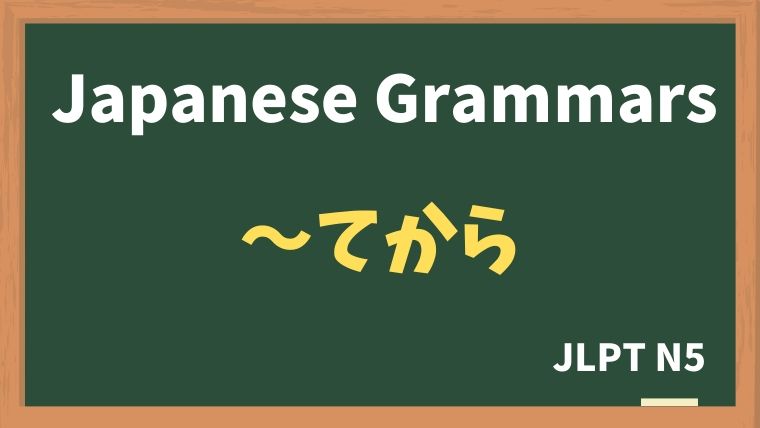
Contents
Explanation:〜てから
fa-check-circleMeaning
"after", "and then"
XてからY:This expresses that X is done before Y.
Used to indicate that one action occurs after another. This expression emphasizes the sequence of events, showing that one action happens only after the first one is completed.
fa-check-circleForm
V(Te form) + から
fa-check-circlePoints
- Action Sequence: "〜てから" is used to show that the second action occurs after the first action.
- Emphasis on Completion: It implies that the first action must be fully completed before the next can happen.
- Commonly Followed by Another Action: The action after "〜てから" is often closely related to the first action.
fa-check-circleJLPT Level
N5
fa-check-circleNote
This grammar pattern is not used for explicit time relationship
❌ドアを開けてから、家に入る。
⭕️ドアを開けて、家に入る。
Sample sentenes
宿題を全部してから寝ます。
I will sleep after I finish my homework.
シャワーを浴びてから、ご飯を食べます。
I will eat my meal after I shower.
日本に来てから、たくさん日本人の友達ができました。
I made a lot of Japanese friends since I came to Japan.
もう少しアニメを見てから寝ます。
I will sleep after I watch a little more anime.
飛行機が止まってから、席を立ってください。
Please stand up after the airplane stops.
授業が終わってから、みんなで掃除しましょう。
Let’s clean the classroom after the class.
先に食券を買ってから、席に座ってください。
Please sit down on your seat after you buy the meal ticket.
Differences from "〜たあとで"
Both "〜てから" and "〜たあとで" can be used to mean "after," but "〜てから" emphasizes a more direct and immediate sequence, while "〜た後で" can imply a more general time frame or interval between actions.
-
- 日本に帰ってから、友達に会いました。
- (After returning to Japan, I met my friend.) — More immediate.
- 日本に帰った後で、友達に会いました。
- (I met my friend after returning to Japan.) — Can be a bit less immediate in sequence.
- 日本に帰ってから、友達に会いました。
Vocabulary
| Japanese | English |
| 授業 | class |
| 先に | first |
| 食券 | meal ticket |
| 席 | seat |







